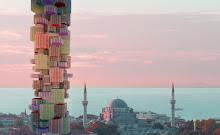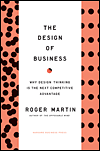So finally after years of planning, the first stone for the Louvre's Islamic art wing was laid by French president Nicolas Sarkozy last week. Ironically, this grand gesture occurred a few days after the French courts denied a Moroccan woman's appeal for citizenship because of the radical interpretation of Islam she practices and because she insists on wearing a burqa. A burqa, she claims she only felt compelled to wear once in France, pressured by those in her religious community.
 This addition to the Louvre will form the largest exhibition space in Europe built purposely to display Islamic Art. Former French president Jacques Chirac saw this project as an effort to redirect attention away from the notion of the clash of civilizations heightened by America's invasion Iraq. Sarkozy announced that this was a symbol of France's friendship with the Arab world.
This addition to the Louvre will form the largest exhibition space in Europe built purposely to display Islamic Art. Former French president Jacques Chirac saw this project as an effort to redirect attention away from the notion of the clash of civilizations heightened by America's invasion Iraq. Sarkozy announced that this was a symbol of France's friendship with the Arab world. Given that France has the largest population of Muslims in Europe (approximately 6 million), this is a significant gesture to reduce the focus on extremists and promote a dialog between the heritage of Islam and the French secular republic. Although, I am surprised that it has taken this long for France to have a museum to display Islamic art given that France has been a colonial power in so many countries throughout North Africa and the Middle East. The department of Islamic Art at the Louvre was not even created until 2003. It seems a tremendous shame that over 10,000 pieces of art, one of the most sizable collections of Islamic art in the world sat unseen in the basement of the museum. However on the flip-side, it is also important to note that since the Louvre is the most visited museum in the world, a new wing focusing purely on Islamic art is monumental and will be viewed once completed by millions of people. For many around the world, this will be their first exposure to this rich artistic heritage. The French cultural minister, Renaud Donnedieu de Vabres acknowledged the significance in 2005. The Louvre, he said was no longer just a museum but "now an essential instrument for the dialogue of cultures and the preservation of their diversities."
 The controversy surrounding the Louvre however, does not end with the headscarf, many are also perturbed that the Saudi prince Al-Waleed bin Talal has donated 17 million euros towards the total cost of 86 million euros to help fund the construction of this museum, when Saudi's hardline interpretation of Islam is viewed as practicing sexual inequality and artistic and cultural destruction - but Sophie Makariou, head curator of the Islamic art department is un-fazed. For her and many others, when trying to promote cultural exchange, awareness and dialogue, everything is not black and white.
The controversy surrounding the Louvre however, does not end with the headscarf, many are also perturbed that the Saudi prince Al-Waleed bin Talal has donated 17 million euros towards the total cost of 86 million euros to help fund the construction of this museum, when Saudi's hardline interpretation of Islam is viewed as practicing sexual inequality and artistic and cultural destruction - but Sophie Makariou, head curator of the Islamic art department is un-fazed. For her and many others, when trying to promote cultural exchange, awareness and dialogue, everything is not black and white.This infusion of culture however, is not only going in one direction. In 2006, the Louvre brought 136 works to Saudi Arabia and 400,000 visitors came to see the exhibition in 2 months. And in 2012, the Louvre will be opening their first museum outside of France. Abu Dhabi is the first country to loan hundreds of works from this famed museum transplanting the Louvre global brand from the heart of France to the sands of the Middle East. This extravagant effort will offer many societies from around the Middle East and Asia, that might previously have little or no exposure to Western art an opportunity to see these pieces first hand.
Like those Mastercard advertisements that are frequently seen on television and magazines -
Cost of the new Islamic Art Wing at the Louvre - 86 million euros
Cost of transplanting the Louvre museum and brand to Abu Dhabi - US$1 billion
Increased cross-cultural understanding and appreciation - Priceless.































No comments:
Post a Comment